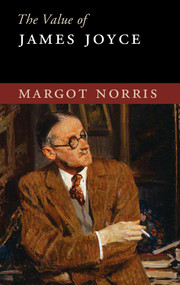Book contents
- Frontmatter
- Contents
- 1 Introduction: Democratic and Cosmopolitan Joyce
- 2 The Significance of the Ordinary in Dubliners, Portrait, and Ulysses
- 3 Irish Nature, Irish City: The Complexities of Place
- 4 Joyce's Cultures, the Classical, and the Popular
- 5 The Styles of Ulysses and Finnegans Wake: Moods, Voices, and Language
- Notes
- Bibliography
- Index
1 - Introduction: Democratic and Cosmopolitan Joyce
Published online by Cambridge University Press: 05 March 2016
- Frontmatter
- Contents
- 1 Introduction: Democratic and Cosmopolitan Joyce
- 2 The Significance of the Ordinary in Dubliners, Portrait, and Ulysses
- 3 Irish Nature, Irish City: The Complexities of Place
- 4 Joyce's Cultures, the Classical, and the Popular
- 5 The Styles of Ulysses and Finnegans Wake: Moods, Voices, and Language
- Notes
- Bibliography
- Index
Summary
James Joyce is one of the most challenging and difficult writers in the English language, highly respected as “the epitome of a high modernist, an artist for and of the cultural elite,” as Brandon Kershner put it. Yet ironically he is also one of the most popular – not only among academics, but also among many common readers. The iconic image to make this point is, of course, the 1955 Eve Arnold photograph of Marilyn Monroe, dressed in a chaste bathing suit in a children's playground, reading a copy of Joyce's Ulysses. This was not a stunt, we learned from Richard Brown, who interviewed the photographer. Monroe told Arnold that she had been reading the book for a long time. “She said she loved the sound of it and would read it aloud to herself to try to make sense of it – but she found it hard going.” One can only wish that Monroe could have enjoyed access to one of the many Ulysses reading groups that have sprung up not only in the United States but also in many other countries in recent decades. Mary Lowe-Evans writes of this Joyce community of varied readers: “Economists, musicologists, physicians, clergymen and women, literary scholars, linguists, students, and housewives engage in lively debate about Joyce's work with soldiers, sailors, architects, and attorneys.” The curious ability to fascinate both high-brow academics and ordinary readers is an important quality of Joyce's work – important because it speaks to a major aspect of its value as art with a remarkably democratic impulse. Sylvia Beach is reported to have said that Joyce himself “treated everyone as an equal, whether they were writers, children, waiters, princesses or charladies.” Joyce resists hierarchical judgments, whether in classifying people according to wealth, status, culture, intelligence, or even virtue, or in selecting thematic and stylistic vehicles for presenting their fictional lives. His strategy was to pursue forms of diversity in most aspects of his writing in order to balance thematic profundity with banality and stylistic aestheticism with commonalities of speech. This democratic tendency is evident in the multiplicity of his characters, the richness and depth of their exploration by the texts, the political and ethical implications in the historical moments of their settings, the inclusion of both the highest and lowest cultural expressions, and the generic and stylistic proliferation found in the works.
- Type
- Chapter
- Information
- The Value of James Joyce , pp. 1 - 7Publisher: Cambridge University PressPrint publication year: 2016



